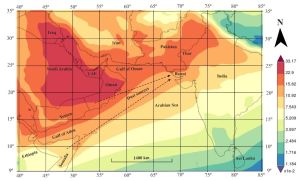A newly detected asteroid, known as 2024 YR4, has gained attention within the scientific community due to its potential risk of impacting Earth on December 22, 2032. Discovered on December 27, 2024, 2024 YR4 measures approximately 40 to 100 meters (130 to 300 feet), comparable to the length of a football field or small skyscraper. Reports indicate there is currently about a 1.9% chance of this asteroid hitting our planet, which some experts say is relatively uncommon.
The near-Earth object is monitored by both NASA and the European Space Agency (ESA) through their joint efforts to track such celestial bodies. Despite the potential threat, scientists stress the likelihood of impact remains low, estimated at over 98% chance of safely passing by Earth. Richard Moissl, head of ESA’s Planetary Defence Office, put it succinctly: "There’s almost a 99 percent chance an asteroid up to the size of a football field won’t hit the Earth, but there’s up to a two percent chance it will," he stated.
This slight increase from earlier estimates, with current projections calculated at about one in 53 odds, has gathered the attention of researchers eager to analyze its potential path. Notably, it is the first asteroid to surpass the 1% impact probability threshold, prompting Tim Spahr, manager of the International Asteroid Warning Network (IAWN), to remark, "Hitting the one percent impact probability is a rare event." Experts have classified the asteroid as Level 3 on the Torino Impact Hazard Scale, which signifies it warrants attention due to the high probability of its close encounter with Earth.
The asteroid's potential to cause damage is significant, particularly if it were to land in densely populated areas. The initial estimates suggest if 2024 YR4 were to collide with our planet, it would likely fall within the risk corridor which stretches across the eastern Pacific Ocean, northern South America, the Atlantic Ocean, Africa, the Arabian Sea, and South Asia. This area was determined after careful calculations and tracking through astronomical observations, likely involving about 66,000 miles from our planet on its closest approach.
Paul Chodas of NASA’s Center for Near-Earth Object Studies reassured the public, saying, "We are not worried at all, because there’s a 99 percent chance it will miss… But it deserves attention." Asteroids routinely zip by our planet, often escaping notice, but 2024 YR4’s increased visibility due to its size and projected path has put it on the radar of astronomers.
Despite the growing interest, experts are careful to convey there’s no immediate cause for alarm. Historical data shows many asteroids initially considered threatening eventually veer off course as more information becomes available. For example, the Tunguska event of 1908 remains one of the most explosive impacts recorded when a similar-sized asteroid exploded over Siberia, flattening over 2,000 square kilometers of forest.
Ongoing studies note the asteroid may be difficult to track for long periods, as it tends to fade from view shortly after each close approach. With its return visit expected in 2028, astronomers plan to observe it closely to gather more data on its characteristics and behavior over time, which will greatly refine its predicted path. "The predictions may wobble around as new observations come in, and eventually may lead to the scenario where the impact probabilities drop to zero," noted MIT professor Richard P. Binzel.
International cooperation remains pivotal as various global space agencies, including NASA and ESA, work tirelessly to allocate resources for planetary defense. The advances made through missions such as NASA's successful DART (Double Asteroid Redirection Test) highlight the possibilities for deflecting dangerous near-Earth objects. Should 2024 YR4’s risk assessment remain above one percent, discussions about response measures will be forthcoming, including the exploration of potential deflection strategies.
These preparations echo the sentiments by both the public and scientific community to stay informed about potential cosmic events. Advances not only present new opportunities to protect against asteroid threats, but also reinforce the need for vigilance as technology develops. While 2024 YR4 serves as the most notable asteroid to date on the risk list, experts remind everyone there is still time to monitor and prepare, marking this as not just a challenge, but also as ample opportunity to showcase human ingenuity.



